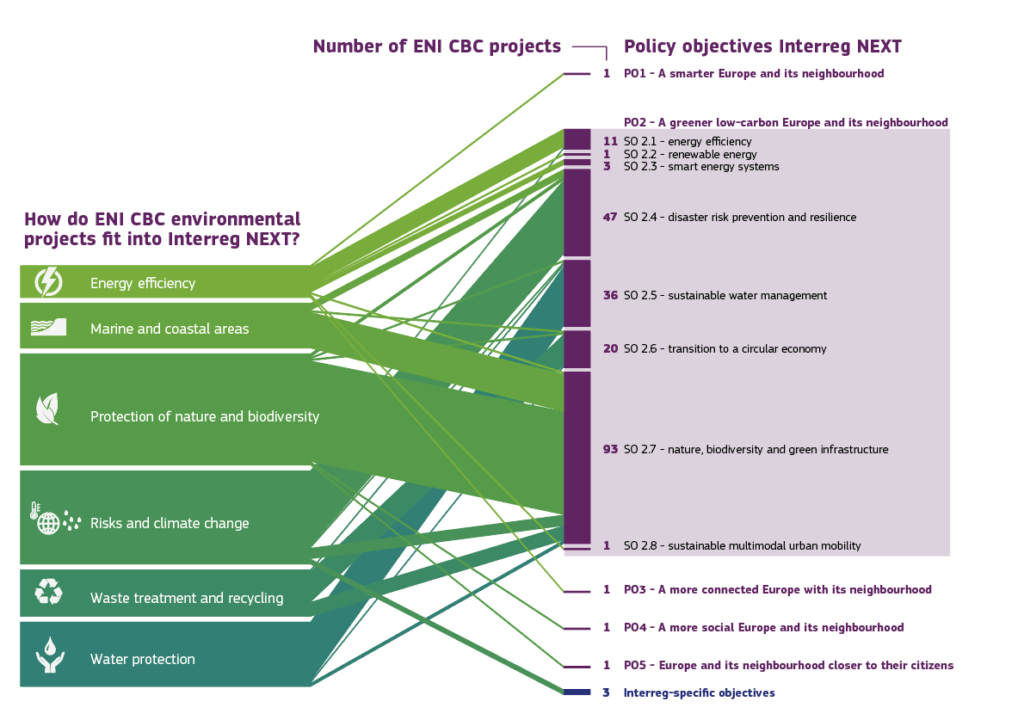Environment: a change of perspective at regional level
Nowadays we continually learn about the environment, and mostly in dramatic terms. We are confronted with increasingly frequent environmental disasters, we face the insufficient commitments of various countries on helping to lower the level of CO2 or reducing the invasion of plastic and micro-plastic into our seas and ecosystems, even inside our bodies. We all know about the inadequate efforts to really change things and reverse the trend pushing the planet towards a gloomy future. To describe the current geological era, experts and scientists have even invented a neologism, the anthropocene, in which the Earth’s environment, in all its characteristics, is strongly conditioned by the effects of human action.
But what happens when, having left the macro dimension, we zoom in on the territories, to observe the positive efforts and the differences that, day by day, many concrete actions can make? While on a global scale environmental tests remain huge and intricate skeins, on a local level many challenges are faced and even solved, thanks to the support and mutual collaboration of people, means, and organisations.
With this “Outlook on projects addressing environment in ENI CBC programmes” – presented on February 28 during a special event about environmental practices – TESIM illustrates the challenges as addressed by the projects financed by the fifteen cross-border cooperation programmes under the 2014-2020 European Neighbourhood Instrument (ENI CBC). In recent months, we have reported on the trends taking place in the large community of over 900 projects. Recently, we examined the aspects related to the social and people-to-people dimension of cross-border cooperation. Now the time has come to introduce how environmental aspects have been tackled by the ENI CBC, from the tundra of Lapland to the deserts of the Maghreb, across the borders that unite the territories of the European Union with those of neighbouring countries. Yes indeed, borders that unite rather than divide, especially when it comes to the environment, because environmental challenges, like their solutions, know no borders and cross them much more easily than any person, commodity or means of transport. Because – let’s remember – neighbours share the same home!
With the aim of providing more insights on the green side of the cross-border actions along the external borders of the European Union, the publication uses little text and lots of graphics. Each page answers to a specific question, contributing to a detailed analysis of 219 environmental cooperation projects, which represent 24% of the total ENI CBC interventions: how are the environmental projects distributed across programmes? In which territories operate more ENI CBC projects? How is the budget of environmental projects distributed across geographical areas? While environmental challenges are widely addressed in all regions covered by ENI CBC, the programmes with the highest concentration of environmental projects are Kolarctic in the North and Black Sea Basin in the East.
Our experts identified six thematic sub-clusters: energy efficiency, marine and coastal areas, protection of nature and biodiversity, risk and climate change, waste treatment and recycling and water protection. This classification shows the richness and multifaced dimensions of the environmental cooperation and, at the same time, it paves the way for strengthening the link with the 2021-2027 programming period, where the aim of creating a greener low-carbon Europe and its neighbourhood represents a crucial pillar for the European cohesion policy. By stepping into these sub-clusters our publication answers to other questions: how are the projects distributed through sub-clusters or across geographical areas? How are partners and lead partners distributed across territories?
More than half of the projects addresses protection of nature and biodiversity (28%) and actions preventing environmental risks and reducing climate change (24%). North and Baltic programmes focus more on protection of nature and biodiversity as well as water protection, while environmental risks and climate change are tackled strongly in the Central-East programmes. Energy efficiency, marine and coastal areas, waste treatment and recycling have a relatively equal distribution across the different geographical areas.
The total number of partners involved in environmental projects is close to 950, equal to 26% of the overall partners involved in ENI CBC projects. Protection of nature and biodiversity together with environmental risks and climate change have the greatest number of partners involved (respectively 22% and 23%). Regional and local authorities and educational and research institutions lead two thirds of the environmental projects, followed by 15% of actions headed by civil society organisations. The private sector leads 10% of the projects.
While about 38% of ENI CBC projects have concluded their activities, the battle for the environment and against climate change does not stop. Cooperation must necessarily look at the future. Our study devolves the last pages to two crucial aspects: the involvement of young people in the cross-border cooperation, and the coherence of projects with the new 2021-2027 programming cycle.
We have discovered that one third of all environmental projects involve Youth. The majority is shared between the marine and coastal areas, and nature protection and biodiversity sectors. In most of the projects addressing risks, climate change and water protection, Youth is not explicitly involved as target group: this is probably due to the focus of this kind of projects on the improvement of infrastructures.
We finally simulated that the 2014-2020 ENI CBC projects operate based on the objectives for the programming period 2021-2027. While all ENI CBC projects show a high level of coherence and continuity with the 2021-2027 overall objectives, 21,5% of environmental projects converge into the specific objective on disaster risk prevention and resilience (SO 2.4) and 42,5% on the one on nature, biodiversity, and green infrastructure (SO 2.7). These two are the great challenges, the big aggregators for the next round of cross-border cooperation projects.
Find the new publication in our Library: https://interregtesimnext.eu/library/
